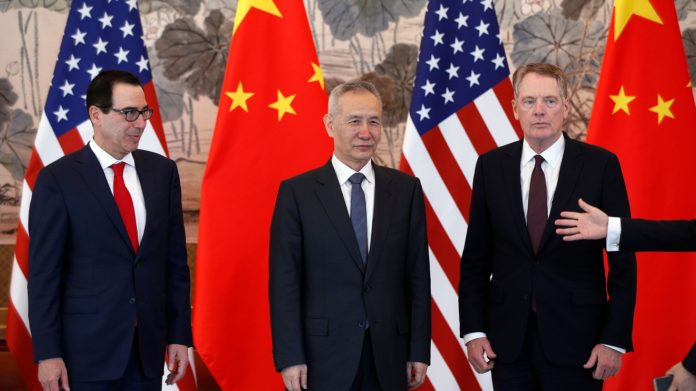A re-ignition of trade concerns could light up the next bond-market rally.
Treasury bulls are coming out in force again after President Donald Trump’s pledge to raise tariffs on Chinese imports sent U.S. equities tumbling Tuesday. Against this backdrop of resurgent trade concerns, much of the bearish factors that had helped drive bond yields higher, and debt prices lower, in the last few weeks are falling by the wayside amid strong demand for haven investments, said market participants.
“This pretty much throws out most of the fundamental thought as we began this week, and trade has now become the most talked about and influential market-moving event on the board. Forget last week’s economic data. Forget this week’s Treasury financings. Forget where the Fed stands,” wrote Kevin Giddis, head of fixed income at Raymond James.
Going into the week, investors had begun to price out the possibility of rate cuts as a less dovish news conference by Federal Reserve Chairman Jerome Powell and solid economic data, including a healthy April jobs report, dampened expectations for easier monetary policy. Moreover, the Treasury Department was selling $78 billion of bond auctions this week, another challenge to bond-market bulls.
Yet in the face of resurgent trade tensions, investors shrugged off these bearish concerns and dived back into the bond market, pushing yields back to their lowest levels since late March. Analysts said appetite for havens have been underpinned by lingering fears that a setback to trade talks could thwart the global economic recovery.
Since Monday, the 10-year Treasury note yield
TMUBMUSD10Y, -1.12%
has retreated 8 basis points on to 2.448%, its lowest level in five weeks, according to Tradeweb data. Bond prices move in the opposite direction of yields.
“The most significant repricings in financial markets during the last two years have been either directly or indirectly a function of the global trade war,” said Ian Lyngen, head of U.S. rates strategy at BMO Capital Markets.
Setting off the market’s concerns,Trump threatened on Sunday to raise tariffs this week on $200 billion of Chinese imports to 25% from a current 10%. After U.S. Trade Representative Robert Lighthizer suggested Beijing had backtracked over terms that had been already agreed upon in previous rounds of talks, optimistic investors are now grappling with the risk that negotiations may take longer than anticipated.
See: Investors are pushing the panic button on U.S.-China trade talks, analyst suggests
If trade talks sour, Treasury yields will have plenty of room to fall if only because stocks have gained so much ground this year on the back of rising expectations for an eventual deal on U.S.-China trade, indicating plenty of pent-up appetite of government paper.
The S&P 500
SPX, -1.65%
is still up more than 15% this year, and was flirting with records only a week ago amid waning trade fears and a patient central bank that has helped ease financial conditions.
“If you just look at what the stock market has done year to date, we’ve priced in a lot of good news,” said Gary Pzegeo, head of fixed income at CIBC Private Wealth Management, in an interview with MarketWatch. He anticipated the 10-year yield to retest the 2.40% level.
But others are more skeptical of whether renewed trade jitters will continue to lift demand for government paper.
So far, the bond market has not followed the steady progress of U.S.-China trade negotiations this year, with yields remaining lower even as equities have climbed. David Woo, a rates strategist at Bank of America Merrill Lynch, said the bond market had mostly dismissed the incremental steps in trade talks because they had little bearing on U.S. economic data.
The Institute for Supply Management’s manufacturing purchasing managers’ index fell sharply in April to its lowest level since Trump’s election, even when trade talks, at least before this weekend, appeared to be making headway.
Providing critical information for the U.S. trading day. Subscribe to MarketWatch’s free Need to Know newsletter. Sign up here.
Source : MTV











